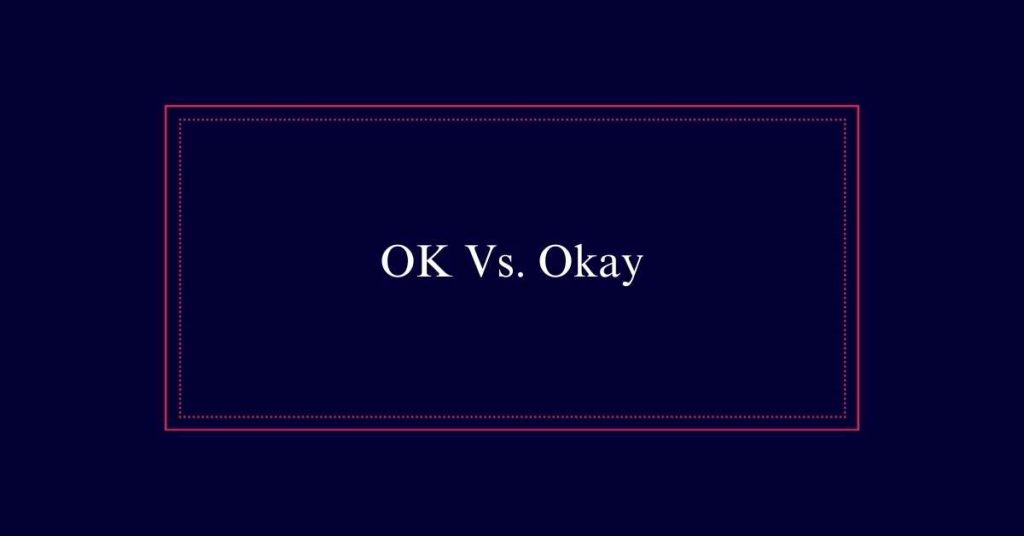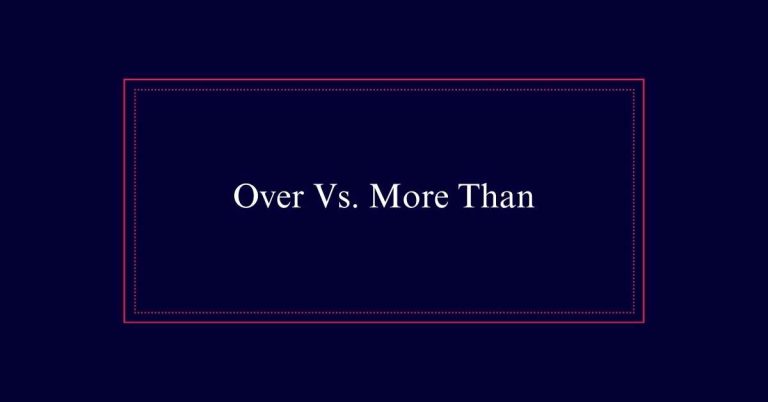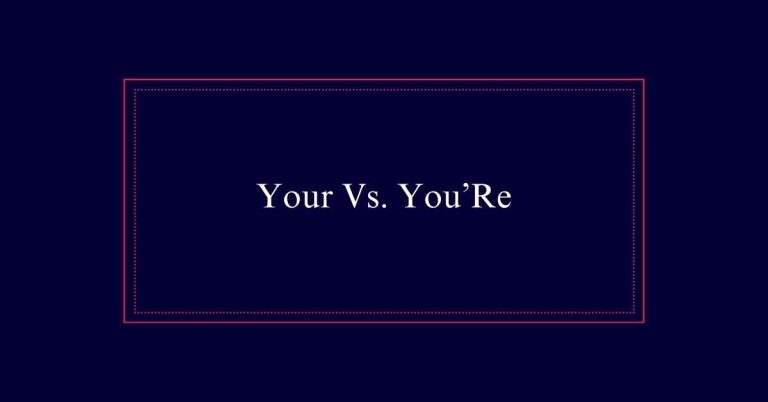OK Vs. Okay
The difference between ‘OK’ and ‘okay’ is minor and largely stylistic. Both originated from a humorous misspelling of ‘all correct’ in the 19th century. Widely popularized during President Martin Van Buren’s 1840 campaign, they have since become entrenched in global communication.
Historical Origins
The historical origins of ‘OK’ trace back to the 19th century, when it emerged as a humorous abbreviation for ‘oll korrect.’ This playful misspelling gained popularity in 1839, initially as part of a trend of intentional misspellings and abbreviations.
The term received further recognition during President Martin Van Buren’s re-election campaign in 1840, where ‘Vote for OK’ referred to his nickname, ‘Old Kinderhook.’ This campaign helped cement the term in American vernacular.
Over time, OK spread internationally, becoming a widely recognized term. The Oxford English Dictionary notes that the spelling ‘okay’ emerged later, but the original abbreviation ‘OK’ was not derived from this later form.
Meaning and Usage
Both ‘okay’ and ‘OK’ serve as versatile tools in everyday communication, expressing agreement, changing topics, checking for understanding, and verifying well-being. They can be used as nouns, verbs, adverbs, or adjectives, making them extremely adaptable.
For example, ‘OK, let’s move on’ can smoothly shift conversations, while ‘Are you okay?’ checks someone’s status. Despite their interchangeable use, the preference for one over the other often depends on style guides or personal choice.
The Chicago Manual of Style prefers ‘okay,’ whereas the Associated Press Stylebook mandates ‘OK.’ Both are considered equally formal and standard in English.
Presidential Influence
President Martin Van Buren’s campaign slogan, ‘Vote for OK,’ played a substantial role in popularizing the term. During his 1840 re-election campaign, Van Buren, also known as ‘Old Kinderhook’ after his birthplace, used the term OK as a catchy slogan. This clever use linked his nickname to the popular abbreviation for ‘oll korrect’ or ‘all correct.
The slogan caught on quickly and contributed to the widespread use of OK in American English. Van Buren’s campaign helped entrench OK in the public lexicon, making it a familiar part of everyday speech.

Spelling Evolution
Tracing the journey of ‘OK’ and ‘okay’ reveals a fascinating evolution in spelling over time. The term ‘OK’ originated from a humorous misspelling of ‘all correct’ as ‘oll korrect’ in the 19th century. This abbreviation gained prominence through President Martin Van Buren’s campaign slogan, ‘Vote for OK.’
Over time, ‘OK’ became widely accepted and even spread internationally. The alternative spelling ‘okay’ emerged later, gaining acceptance as a more phonetically intuitive form. Despite their different origins, both ‘OK’ and ‘okay’ have become standard in modern English.
Style Guide Preferences
Different style guides offer varying preferences for using ‘OK’ or ‘okay’ in written text. The Chicago Manual of Style prefers ‘okay,’ citing its more formal appearance.
In contrast, the Associated Press Stylebook mandates the use of ‘OK,’ even extending this to forms like ‘OKing’ and ‘OK’d.’ Some style guides consider both forms acceptable, leaving the choice to the writer’s discretion.
Regardless of the chosen form, it is vital to maintain consistency throughout the document. For professional writing, it is advisable to adhere to the specified style guide to guarantee clarity and uniformity.
Usage in Media
In various forms of media, the choice between ‘OK’ and ‘okay’ often depends on the publication’s style guide and the context of the content. For example, news organizations like those following the Associated Press Stylebook prefer ‘OK’.
On the other hand, some literary publications and books often use ‘okay’ as per the Chicago Manual of Style. In social media, both forms are widely accepted and used interchangeably.
The decision can also be influenced by the medium’s tone and audience. Digital media may favor the shorter ‘OK’ for brevity, while print media may choose ‘okay’ for a more traditional feel.
Formality in Writing
When considering formality in writing, both ‘OK’ and ‘okay’ can be used, but it is important to follow the specific style guide of the publication or context.
The Chicago Manual of Style prefers ‘okay,’ while the Associated Press Stylebook mandates ‘OK.’ Despite this, both forms are equally formal and widely accepted in professional writing.
It is advisable to check the guidelines of the specific medium you are writing for to guarantee consistency. If in doubt, more formal synonyms like ‘acceptable’ or ‘satisfactory’ can be employed. This helps maintain a professional tone.
Versatility of Use
Beyond considerations of formality, the versatility of ‘OK’ and ‘okay’ makes them valuable tools in various contexts. These terms can be seamlessly integrated into various forms of communication due to their adaptable nature.
- Agreement: Both ‘OK’ and ‘okay’ effectively convey agreement or acceptance in conversations.
- Transition: They serve as handy tools to shift topics or signal the end of a discussion.
- Verification: These words can be used to check understanding or confirm that everything is fine.
Interchangeability
As a result, the terms ‘OK’ and ‘okay’ can be used interchangeably without altering the meaning of a sentence. Both spellings are accepted in standard English and convey the same sense of agreement, acknowledgment, or validation.
For instance, ‘Is everything OK?’ and ‘Is everything okay?’ are identical in meaning and usage. Their interchangeability allows for flexibility in writing, whether formal or informal. However, the choice between ‘OK’ and ‘okay’ may depend on personal preference or specific style guide recommendations.
Best Practices
Given their interchangeability, understanding the best practices for using ‘OK’ and ‘okay’ can enhance clarity and adherence to style guidelines. Here are some recommendations:
- Follow Style Guides: Different style guides have specific preferences. For example, the Chicago Manual of Style uses ‘okay,’ while the Associated Press Stylebook prefers ‘OK.’
- Consider Context: In formal writing, if uncertain, use synonyms like ‘acceptable’ or ‘satisfactory’ to avoid confusion.
- Consistency: Maintain consistency within a document. If you start with ‘OK,’ continue using it throughout, and the same goes for ‘okay.’






